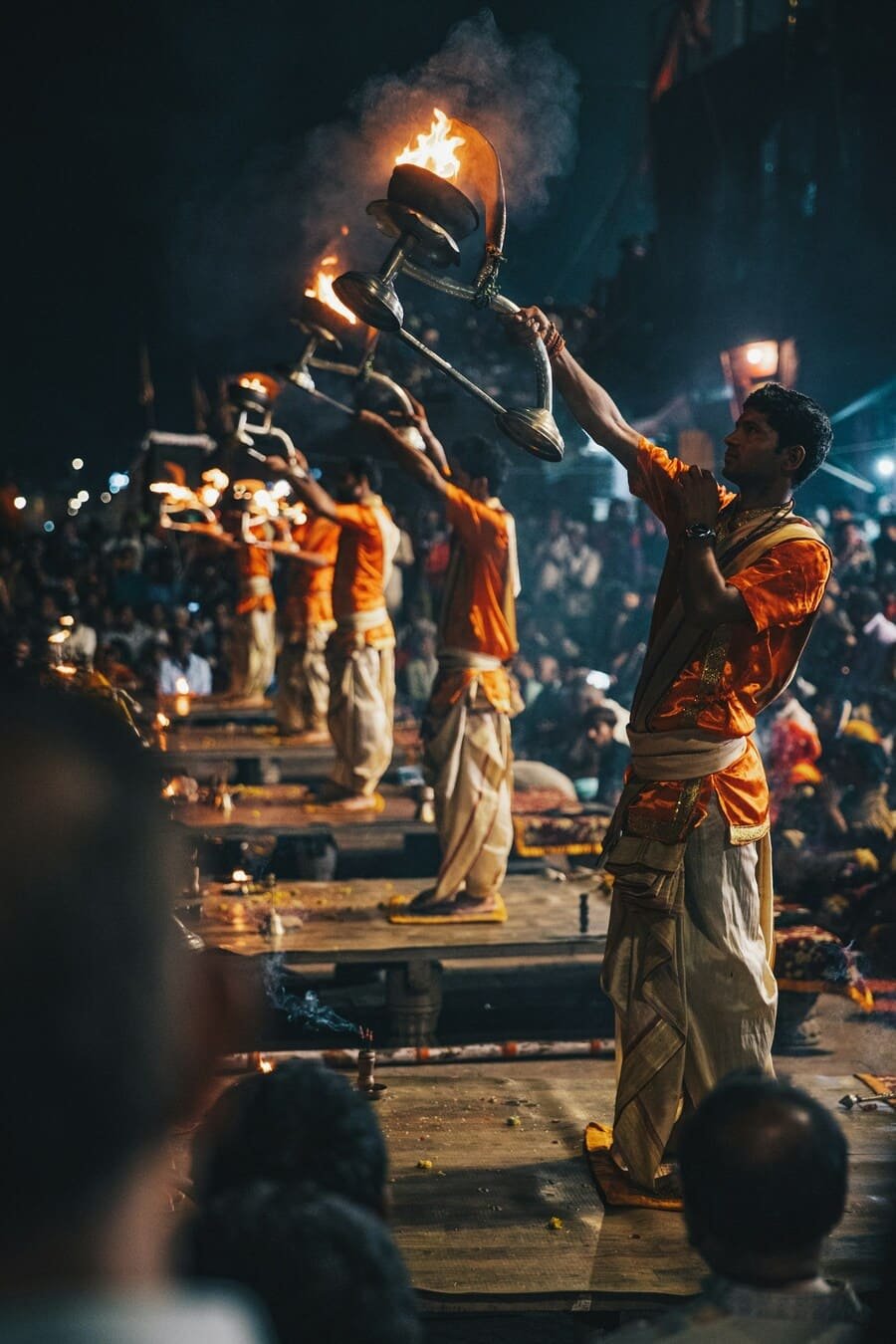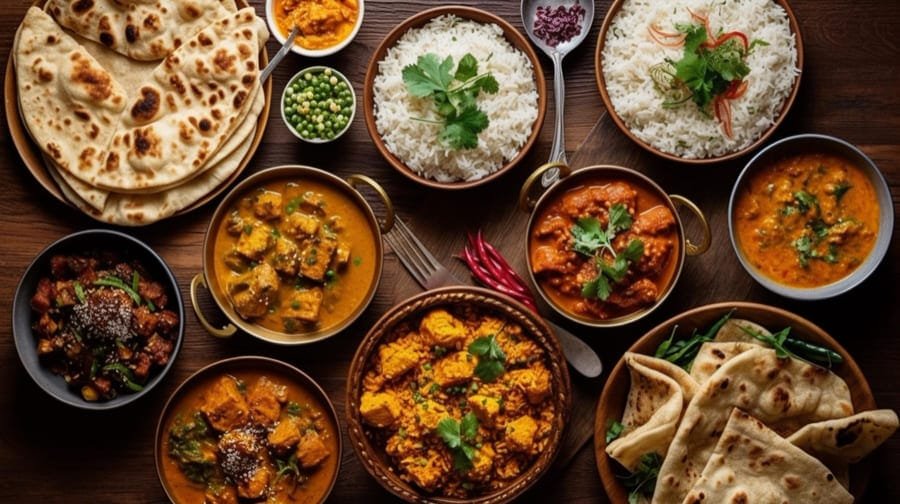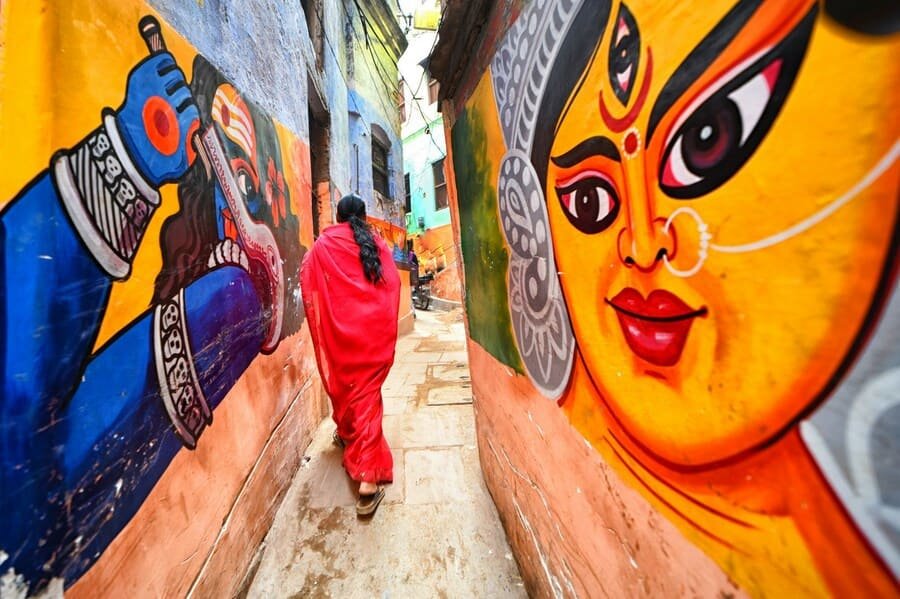Embark on a transcendent journey through the mystical and culturally rich city of Varanasi, situated along the sacred Ganges river. This unique and vibrant city has been a source of inspiration for artists, photographers, and spiritual seekers for centuries. In this blog post, we will explore the rich tapestry of colors and emotions that define Varanasi, from its bustling ghats to its serene temples, offering a glimpse into the spiritual and artistic essence of this ancient city.
Table of Contents
Key Takeaways:
- Spiritual significance: Varanasi is a deeply spiritual city, and the colors captured in the book represent the diverse religious and cultural traditions found along the Ganges.
- Artistic representation: The book beautifully showcases the vibrant and lively colors of Varanasi, capturing the essence of the city’s aesthetics and visual appeal.
- Cultural diversity: Through the photographs, the book highlights the rich and diverse cultural tapestry of Varanasi, portraying the harmonious coexistence of different communities and traditions.
- Ganges as a lifeline: The images in the book depict the Ganges River as more than just a physical entity; it shows how it is deeply intertwined with the daily lives, beliefs, and rituals of the people of Varanasi.
- Emotional and introspective journey: ‘Colors of Varanasi’ takes the reader on a profound and introspective journey, evoking a range of emotions and offering a deeper understanding of the city’s soul.
Historical Colors of Varanasi
Assuming you are standing on the banks of the Ganges in Varanasi, you are surrounded by a city with a rich historical tapestry. The sacred city of Varanasi has witnessed the rise and fall of empires, and its colors reflect the diverse influences that have shaped its history. From ancient roots to the Mughal period, Varanasi’s historical colors offer a glimpse into the city’s storied past.
Ancient Roots
Ancient Varanasi, also known as Kashi, has a history dating back thousands of years. The city is believed to be one of the oldest continuously inhabited cities in the world, with a heritage that predates the ancient civilizations of Greece and Rome. The colors of Varanasi are imbued with the spiritual and cultural traditions that have been passed down through the ages, creating a unique canvas of ancient mysticism and reverence for tradition.
The Mughal Influence
One of the most significant influences on Varanasi’s colors came during the Mughal period. The Mughal emperors, known for their patronage of the arts and architecture, left an indelible mark on the city. The Mughal influence can be seen in the intricate designs of the city’s mosques, palaces, and temples, as well as in the colorful fabrics and textiles that are a hallmark of Varanasi’s artisanal tradition.
Any visitor to Varanasi will be struck by the opulent Mughal motifs adorning the city’s historical landmarks, showcasing the fusion of Persian, Central Asian, and Indian artistic styles. The Mughal era brought a new palette of vibrant hues to Varanasi, enriching the city’s colors with a sense of grandeur and opulence.
Varanasi’s historical colors offer a breathtaking testament to the city’s enduring legacy, reflecting the ancient roots and vibrant influences that have shaped its character over millennia.

The Spiritual Palette
Clearly, the spiritual essence of Varanasi is reflected in its vibrant and diverse color palette. From the bright hues of the sunrise reflecting on the holy Ganges to the rich colors adorning the temples and ghats, every shade holds a deeper meaning in this ancient city.
Ghats and Their Ceremonies
The ghats of Varanasi form a kaleidoscope of colors, each one representing a different ceremony or ritual. From the saffron robes of the sadhus performing aarti to the colorful flower petals being offered to the river, every hue symbolizes a spiritual significance in the lives of the devotees. The ceremonies performed against the backdrop of the Ganges create a mesmerizing visual spectacle that is deeply entrenched in the spiritual fabric of the city.
Temples: Colors and Deities
Temples in Varanasi are a riot of colors, each one dedicated to a specific deity and adorned with corresponding hues. The vibrant color palette used in the temples not only adds to the visual appeal but also signifies the divine presence believed to reside within. From the orange marigold garlands adorning the temples to the yellow robes of the devotees, every color serves as a symbol of spirituality and devotion to the thousands of gods and goddesses worshipped in the city.
A visit to the temples in Varanasi provides a fascinating insight into the religious practices and beliefs of the people, offering a feast for the senses with their colorful decorations and divine imagery.

Art and Artistry Along the Ganges
Unlike the chaotic and colorful streets of Varanasi, where life unfolds in a mesmerizing dance of daily activities and spiritual rituals, the artistic expressions found along the Ganges offer a serene and thought-provoking contrast. The art and artistry found along the Ganges are a reflection of the spirituality, creativity, and cultural richness of this ancient city. To delve deeper into the artistic soul of Varanasi, one must explore the traditional crafts and contemporary art movements that thrive amidst the spiritual energy of the Ganges.
For an in-depth look at the traditional crafts of Varanasi, readers can explore this article, A Journey Through the Winding Streets & Vibrant Life of Varanasi, India. This region is renowned for its intricate handwoven silk fabrics, known as Banarasi silk, which are adorned with stunning designs and vibrant colors. The skill and artistry of the local weavers have been passed down through generations, and their creations are highly sought after around the world.
Traditional Crafts
Along the Ganges, traditional crafts come to life in the form of handcrafted jewelry, woodcarvings, and pottery, each infused with the spiritual essence of the city. The narrow alleyways are dotted with workshops where skilled artisans tirelessly create pieces that reflect the time-honored techniques and designs of their ancestors. The art of creating these traditional crafts serves as a celebration of the city’s rich cultural heritage, offering visitors an opportunity to witness the beauty of Varanasi’s artistic traditions.
Contemporary Art Movements
Artistry along the Ganges is not confined to traditional crafts. In recent years, contemporary art movements have also found a place in the cultural landscape of Varanasi. Emerging artists are exploring new and innovative ways to express the spiritual and social dynamics of the city through visual arts, sculptures, and mixed media installations. These contemporary art movements serve as a testament to the ever-evolving nature of Varanasi’s artistic expression, blending modern influences with the timeless spirituality that permeates the city.
It is fascinating to witness how contemporary artists are reinterpreting age-old traditions and infusing them with fresh perspectives, creating a vibrant dialogue between the past and the present. The juxtaposition of traditional crafts and contemporary art movements allows visitors to experience the depth and dynamism of Varanasi’s artistic heritage, providing insights into the city’s cultural evolution and creative resilience.

The Colorful Festivals of Varanasi
Now, let’s dive into the vibrant and lively world of festivals in Varanasi, where colors, spirituality, and traditions come together to create unforgettable experiences.
Diwali: Festival of Lights
Festival Diwali, the festival of lights, is one of the most eagerly awaited and celebrated festivals in Varanasi. The entire city is adorned with colorful lights and diyas (earthen lamps), creating a mesmerizing sight along the Ganges. The air is filled with the scent of incense and the sounds of crackers, as families come together to celebrate the triumph of light over darkness and good over evil.
Festival During Diwali, the main ghat of Varanasi, Dashashwamedh Ghat, hosts a grand ceremony where thousands of diyas are lit, and the Ganges comes alive with the flickering lights dancing on its surface, creating a magical and spiritual ambiance that is truly breathtaking.
Holi: The Festival of Colors
One of the most joyous and exuberant festivals in Varanasi is Holi, the festival of colors. The entire city erupts in a riot of colorful powders and water as people celebrate the arrival of spring. Locals and visitors alike participate in the revelry, smearing each other with gulal (colored powders) and drenching each other with water, all in the spirit of love and unity.
One of the highlights of Holi in Varanasi is the traditional ‘lath mar Holi’ where women playfully beat men with sticks, a playful reenactment of the divine love story of Radha and Krishna. It is a vibrant and energetic celebration that brings people of all backgrounds together in a joyful and colorful display of community spirit.
Dev Deepawali: The Ganges Illuminated
With thousands of earthen lamps adorning the ghats, Dev Deepawali transforms Varanasi into a mesmerizing spectacle of lights and spirituality. Dev Deepawali, which translates to ‘the Diwali of the Gods’, is a grand celebration that takes place fifteen days after Diwali. The Ganges is aglow with diyas, and the entire city is enveloped in a serene and mystical atmosphere, as priests perform elaborate rituals and ceremonies along the ghats.
Ganges, diyas, spiritual, tradition, vibrant, festive, colorful, celebration, community, joy, love, unity
The Everyday Spectrum
Your journey through the colors of Varanasi is not limited to its famous ghats and temples. The everyday spectrum of the city’s hues can be found in its local markets, bazaars, culinary delights, and vibrant street art.
As you explore the local markets and bazaars of Varanasi, you’ll be surrounded by a kaleidoscope of colors. An array of vivid fabrics, handcrafted trinkets, and aromatic spices create a feast for the eyes. Locally made textiles, such as vibrant silk sarees and intricately embroidered shawls, showcase the rich cultural heritage of the region. The bustling bazaars are filled with the cheerful banter of vendors and the energy of shoppers, adding to the lively tapestry of colors.

The Culinary Colors of Varanasi
Bazaars in Varanasi are also known for the vibrant hues of their culinary offerings. An assortment of fresh fruits, vegetables, and spices create a picturesque display at the local markets. The city’s iconic street food, such as savory chaat, crispy pakoras, and sweet jalebis, bursts with flavors and colors, enticing the taste buds of visitors.
Culinary explorations in Varanasi offer a sensory experience that is as visually captivating as it is delicious. The palette of the local cuisine, influenced by the region’s diverse cultural heritage, reflects the vibrant spirit of the city itself.
Street Art: Expressions in Public Spaces
Spectrum: Varanasi’s streets are adorned with captivating street art that adds a modern twist to the city’s traditional charm. Murals, graffiti, and colorful installations bring life to public spaces, showcasing the creativity, spirit, and diversity of the local artistic community.
The street art scene in Varanasi serves as a platform for expression, reflecting the city’s dynamic energy and providing thought-provoking visual narratives on social, cultural, and spiritual themes. Witnessing these artistic expressions adds a unique dimension to the city’s vibrant spectrum of colors.

Changing Hues: Varanasi in the Modern Era
For centuries, Varanasi has been revered as a spiritual and cultural center in India. However, with the onset of modernization, the city has witnessed significant changes in its environment and landscape. The once serene and untouched banks of the Ganges River are now facing environmental challenges, while the influx of tourists has brought both opportunities and concerns for the city’s future.
Environmental Concerns and Conservation Efforts
For many years, Varanasi has grappled with the adverse effects of urbanization and industrialization, leading to pollution of the Ganges and degradation of its surrounding ecosystem. Efforts to clean the river and promote sustainable practices have been undertaken, but the battle against pollution remains an ongoing challenge. The government has initiated various conservation projects, including the Clean Ganga Mission, to restore the river’s purity and protect its biodiversity. Additionally, local organizations and environmental activists have been working tirelessly to raise awareness and implement measures for the preservation of Varanasi’s natural heritage.
The Impact of Tourism
Changing the landscape of Varanasi, tourism has brought both benefits and drawbacks to the city. The influx of visitors has contributed to the local economy and provided employment opportunities for the residents. However, the rapid growth of tourism has also led to overcrowding, increased waste generation, and strain on the city’s infrastructure. Varanasi has experienced cultural commodification and the degradation of ancient sites due to unchecked tourism. Efforts are being made to strike a balance between tourism promotion and the preservation of Varanasi’s cultural and historical significance.
For the sustainable development of Varanasi, it is crucial to address the environmental implications of tourism and implement environmental management strategies. Balancing the needs of tourists with the preservation of the city’s natural and cultural heritage is essential for the long-term sustainability of Varanasi.
Future Prospects and Developments
Tourism will continue to play a pivotal role in shaping the future of Varanasi. There are ongoing discussions and initiatives aimed at promoting sustainable tourism practices and enhancing the overall visitor experience. Emphasizing responsible tourism and fostering a deeper understanding of Varanasi’s cultural and spiritual significance can pave the way for a more harmonious coexistence between the city and its visitors.
Environmental conservation, infrastructure development, and cultural preservation are at the forefront of Varanasi’s future prospects. It is imperative to strike a balance between tourism promotion and environmental preservation to ensure the longevity of Varanasi as a sacred and culturally rich destination.
The Colors of Faith and Belief
After witnessing the vibrant and diverse colors of Varanasi’s ghats and alleyways, one cannot help but be struck by the city’s deep connection to faith and belief. The hues of the city are not only a reflection of its lively atmosphere, but also a visual representation of the spiritual richness that permeates every aspect of life in Varanasi.
Hinduism and the City’s Spiritual Life
City’s spiritual life revolves around the ancient and venerable religion of Hinduism, which plays a central role in the daily rhythms of Varanasi. From the crack of dawn to the late hours of the evening, the city resounds with the chants of prayers and the ringing of temple bells. At the heart of Varanasi’s spiritual life lies the Ganges River, where devout Hindus perform their rituals and ceremonies, seeking blessings and purification in the holiest of waters.
While the city’s spiritual life is intimately intertwined with Hinduism, Varanasi is home to a religious tapestry that extends far beyond the boundaries of this ancient faith. Over the centuries, Varanasi has become a melting pot of different religions and belief systems, including Buddhism, Jainism, and Islam. The city’s religious diversity enriches its cultural fabric, adding depth and complexity to its spiritual landscape.
Beyond Hinduism: Varanasi’s Religious Tapestry
Belief systems other than Hinduism also find their expression in the city, contributing to its diverse religious tapestry. Varanasi is not only a pilgrimage site for Hindus, but also holds significance for Buddhist and Jain communities. The famous Sarnath, located just outside the city, is a major Buddhist pilgrimage site where the Buddha gave his first sermon. The presence of these different religious traditions creates a multi-layered spiritual environment that adds a unique dimension to the city’s atmosphere.
With the Ganges River as its spiritual artery and the vibrant colors of its streets as a testament to the diversity of faith, Varanasi is a place where the boundaries between the physical and the metaphysical, the known and the unknown, blur in a symphony of belief and devotion.
Conclusion
Considering all points, ‘Colors of Varanasi – A Spiritual and Artistic Journey along the Ganges’ captures the breathtaking beauty and spiritual significance of Varanasi in a visually stunning way. Through the lens of the photographer and the words of the author, the book paints a vivid and soul-stirring portrait of this ancient city, allowing readers to immerse themselves in its rich culture and traditions.
This captivating work not only showcases the vibrant colors and cultural diversity of Varanasi but also serves as a powerful reminder of the sacredness and resilience of this ancient Indian city. ‘Colors of Varanasi’ is a must-read for anyone seeking to experience the magic and spirituality of Varanasi through a unique blend of art and storytelling.
FAQ
Q: What is ‘Colors of Varanasi – A Spiritual and Artistic Journey along the Ganges’?
A: ‘Colors of Varanasi – A Spiritual and Artistic Journey along the Ganges’ is a multimedia project that captures the essence of the ancient city of Varanasi through its vibrant colors, spiritual significance, and artistic expressions along the banks of the sacred Ganges River.
Q: What is the significance of Varanasi in Hinduism?
A: Varanasi, also known as Kashi, is one of the oldest living cities in the world and holds immense spiritual significance in Hinduism. It is believed to be the abode of Lord Shiva and is considered a sacred place for pilgrimage and Moksha (liberation from the cycle of birth and death).
Q: What can one expect to experience in ‘Colors of Varanasi’?
A: ‘Colors of Varanasi’ offers a visual and spiritual journey through the bustling ghats (riverfront steps), ancient temples, vibrant markets, and the daily rituals and ceremonies along the Ganges. It provides a glimpse into the rich cultural heritage and deep-rooted traditions of Varanasi.
Q: How does ‘Colors of Varanasi’ showcase the artistic aspect of the city?
A: The project captures the artistic expressions in Varanasi through its intricate street art, mesmerizing classical music and dance performances, traditional crafts, and the skillful artisans who continue to uphold the city’s artistic legacy through their work.
Q: What makes ‘Colors of Varanasi’ a unique and enriching experience?
A: ‘Colors of Varanasi’ goes beyond the conventional travel documentary and delves into the soul of Varanasi, offering a deeper understanding of its cultural, spiritual, and artistic heritage. It provides a immersive experience that leaves a lasting impression on the audience, showcasing the timeless allure of Varanasi.
Featured Image by Shiv Prasad on Unsplash







